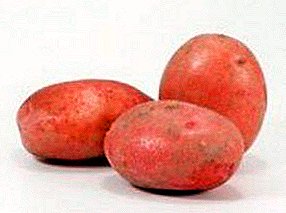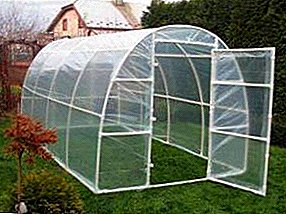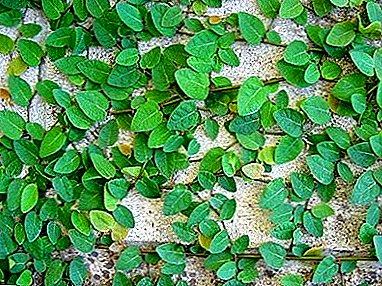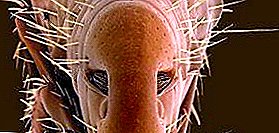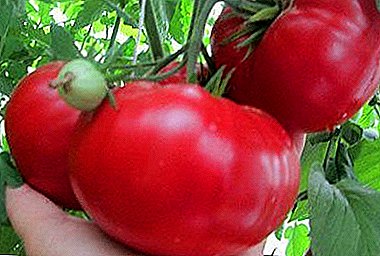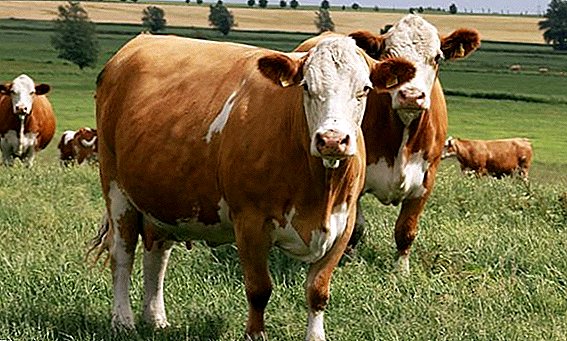 For farmers, the issue of breeding cattle has always been topical, which would become universal for both dairy and meat production.
For farmers, the issue of breeding cattle has always been topical, which would become universal for both dairy and meat production.
Swiss simmentals are a good example of this perfect combination. At the slightest effort and cost, the representatives of this breed are very productive.
Breed history and description
The origin of the Simmental (or Bernese) breed of cows is still unknown. There are two hypotheses about where the Simmentals came from. The first is that the cows were brought from Scandinavian countries, and the second says that they originated from wild tours. 
Origin
Researchers of the origin of the Berne breed tend to think that it was brought from Scandinavian countries to Switzerland. Later, for a long time, cows grazed on the banks of the River Bern, previously it was called Simma, perfected and acquired familiar features. They became more and more beautiful, and from practically unproductive cattle evolved into one of the best meat and dairy breeds.
External features
Bernese cows are endowed with rather large sizes. In withers they reach a height of 150 centimeters, and in length - 160. Adult males can reach a ton in weight, females are usually less, their weight varies from 600 to 800 kilograms.
Feature of the breed is a rough face and a large forehead. On it are predominantly light horns, which sometimes can darken at the ends.  Bernese cows are endowed with a large and developed sacrum, which indicates a well-organized and functional reproductive system. Thereby females are able to produce a lot of milk. The cow udder is large, the skin to the touch is smooth, but a little loose. The shape of the udder may not be entirely symmetrical: often the rear nipples grow larger than the front ones.
Bernese cows are endowed with a large and developed sacrum, which indicates a well-organized and functional reproductive system. Thereby females are able to produce a lot of milk. The cow udder is large, the skin to the touch is smooth, but a little loose. The shape of the udder may not be entirely symmetrical: often the rear nipples grow larger than the front ones.
Did you know? Cows can cry when they feel sad.
Meat and dairy characteristics
Simmental breed is universal. It is perfect for both slaughter and for the production of milk, which has excellent characteristics:
- fat content varies from 3.7% to 4%;
- wonderful taste;
- high protein content.
As a meat breed, simmentals are becoming increasingly popular, now they are often kept just for slaughter.  If you focus on this use of Bernese cows, you can select their main meat characteristics:
If you focus on this use of Bernese cows, you can select their main meat characteristics:
- young calves are gaining up to a kilogram per day;
- chickens meat slaughter reaches 55%, and bulls - 65%;
- females are usually slaughtered when their ability to give milk decreases;
- males are allowed to meat up to two years old;
- meat quality is quite high, because fat content does not exceed 15%.
Check out these breeds of cattle meat and dairy areas: Caucasian brown, Sychevskaya, Schwyzka, Krasnogorbatovskaya.
Advantages and disadvantages
Simmental cows are truly universal: they bring a minimum of hassle, but provide the owner with excellent meat and delicious milk.
Animals have several advantages:
- the maximum amount of tasty meat;
- give a lot of milk per season;
- easy to maintain;
- resistant to parasites and diseases;
- well inseminated both artificially and naturally;
- have developed maternal instinct;
- have a calm, flexible temper.
 Simmental Bull Of the minuses, there are several small flaws:
Simmental Bull Of the minuses, there are several small flaws:
- there are cases of a slightly wrong structure of the hind legs, which is why the cow walks slower than others;
- due to the large weight with age, the back of the animal may sag;
- a large milk yield decreases meat productivity, and vice versa. Therefore, it is necessary to keep the dairy and beef herd separately, to prevent them from crossing.
Maintenance and care
The special conditions of the cows of this breed do not need. To provide simmentaleam comfort and prevent disease, you must follow a few simple rules. They are universal for any cattle and will help to achieve excellent performance without much effort.
To create a comfortable environment for cattle, we advise you to learn how to build a barn, equip ventilation and make a stall for animals with your own hands.
Summer walking ground
The summer walking area is designed so that in the warm season the cow can go out, breathe fresh air, walk. On walking the animal can stay overnight. In the mentioned area it is necessary to build a plot with a roof (shed), which will create a shadow. Such an adaptation is necessary so that the cow does not overheat in the sun and feel comfortable during the summer season. 
Arrangement of the barn
A shed, where animals will spend most of their lives, should be comfortable and equipped with everything necessary. The feeder must be deep and preferably removable so that it is easy to clean. As a drinker, you can use the usual trough. It is important that there is always water. The flooring in the place where the cow lives must always be dry and clean. Most often use waste from straw. Sometimes to save straw mixed with soil or peat, in a ratio of 1: 2.
Important! If you lay a wet litter, the cow will fall on it only when it is completely exhausted. And this will reduce the amount of milk produced by 10-15%.
Comfortable conditions
Simmentals are so convenient in maintenance that in the summer they can safely be left to spend the night on pasture or walking. They normally tolerate both heat and cold, so they are able to feel good in our latitudes.
In winter, the animal must be provided with a stall that will be well ventilated. The main thing is to prevent drafts, otherwise the cows will feel uncomfortable and ill. The room temperature can vary from +4 ° C to +20 ° C.  In the cold season, you need to organize the lighting so that the cow follows the usual daily routine, understand when the time for feeding, milking, etc. will come. It is necessary that the length of daylight hours is always the same, at night you need to leave a dim light. It will be optimal to install two lamps on five stalls.
In the cold season, you need to organize the lighting so that the cow follows the usual daily routine, understand when the time for feeding, milking, etc. will come. It is necessary that the length of daylight hours is always the same, at night you need to leave a dim light. It will be optimal to install two lamps on five stalls.
Did you know? The cow became a ruminant after many years of evolution. This was due to the fact that the cows could not quickly to run, they grabbed food, swallowed and walked to a quieter place, where she and eaten.
Cleaning
Stall cleaning is one of the most important aspects of cattle keeping. Proper and timely cleaning of the room reduces the chances of the animal becoming infected with parasites. It is necessary to carry out the procedure daily, preferably twice a day, in the morning and in the evening. This way you can provide maximum comfort for the animal, the minimum amount of unpleasant smell from the stall, as well as to be sure that the cow will be healthy and the milk clean.
When feeding with dry food, such as hay or oats, you can simply put a new batch in the feeder. This food will not spoil and will not rot. If you prefer to give the cow boiled corn with water or vegetable scraps, then the feeder should be regularly washed and timely cleaned of the uneaten leftover food so that they do not deteriorate. If a cow eats sour porridge, it can lead to poisoning or even death.  Water in the drinking trough also needs to be changed daily. Clean water is the key to well-being of the animal.
Water in the drinking trough also needs to be changed daily. Clean water is the key to well-being of the animal.
Important! When an animal is kept in an untidy stall, milk quality indicators are reduced, because it causes bacteria to enter.
What to feed
Simmental do not need special feed mixtures, but since they are large and massive animals, they require constant good nutrition. It is recommended to feed cattle 3 times a day. Mostly oats or hay, boiled corn kernels are used as feed mixture. Also, the cow will be very happy vegetable trim, which should be pre-soaked in water.
It is important to dry the hay in the sun for more than 3 hours. This is necessary in order for the animal to properly digest food and not experience pain in the stomach. If you choose to feed livestock with wheat grain, then you should monitor its quality: the feed should be as efficient as possible, so that there are no prickly inclusions that can damage the stomach of the cows and lead to severe painful sensations.
Walking the cattle to pasture
When walking in the pasture, the animals do not need additional feeding during the day, although in the morning and in the evening you can put hay or oats in the feeder. Cows are deliciously eating fresh grass in the meadows, so they are even left there for the night in the summer. It is necessary to fill the feeders with such amount of food so that after the meal of the animal there remains a little. This is necessary to ensure that the cow is completely saturated and not hungry, otherwise the amount of milk will significantly decrease.
It is necessary to fill the feeders with such amount of food so that after the meal of the animal there remains a little. This is necessary to ensure that the cow is completely saturated and not hungry, otherwise the amount of milk will significantly decrease.
Read about how to graze cows in the pasture.
Differences in winter feeding
In winter, the animal receives less nutrients than in other seasons, so it is necessary to dilute the diet of livestock, add more vitamins and minerals. Often use supplementary feeding with boiled corn kernels, vegetables. It is also important to monitor the frequency of feeding: adult cows should be given food 2-3 times a day.
Subtleties breeding young animals
Animals reach sexual maturity at the age of 2.5 years. The first calving usually accounts for 31 months. A cow can bring a new calf once a year and a half. Pregnancy lasts 283 days. At childbirth childbirth, human assistance is practically not required.  To recognize the ideal period for mating, it is necessary to identify the period of hunting in cows. At this time, certain changes occur in the behavior of the female:
To recognize the ideal period for mating, it is necessary to identify the period of hunting in cows. At this time, certain changes occur in the behavior of the female:
- she becomes more affectionate;
- moos for no reason;
- takes a pose for mating, tries to do cage on other individuals;
- increased activity;
- for no reason wanders around the fences;
- noticeable deterioration in appetite.
Important! The characteristic physical changes in the hunting period are reddening of the labia and mucous discharge from the vulva.
Bulls feel very vividly the period when a cow is ready to mate, and they behave more aggressively. This is the second unmistakable way to determine the optimal time for mating.
The calf is born with a weight of 50 kilograms. From the first minutes of life, the animal tries to stand up, after a couple of hours of existence, finds an udder. Simmental cows have excellent maternal instinct and are able to feed their offspring themselves.  Simmental youngsters can gain up to 1.5 kg of weight per day. If you decide to take the baby from the mother, you should transfer it to an individual diet. Immediately after birth, the calf is fed to the calf, it contains many nutrients, and is also a guarantor of the future health of the baby, his ability to resist diseases and parasites. Three days after calving, colostrum will become common milk, so you need to give your calf the maximum amount. Feed needs every 2 hours. After eating the animal's muzzle must be wiped with a clean cloth. From the sixth day of life, you can teach your baby to drink from a bucket. On the eighth day, you should start adding a little semolina to the milk, and also teach you to eat hay. In three weeks, they start feeding him with succulent fodder, such as sawdust from vegetables. To provide the body with the right amount of minerals, it is necessary to give it a mixture of salt, chalk and meat and bone meal.
Simmental youngsters can gain up to 1.5 kg of weight per day. If you decide to take the baby from the mother, you should transfer it to an individual diet. Immediately after birth, the calf is fed to the calf, it contains many nutrients, and is also a guarantor of the future health of the baby, his ability to resist diseases and parasites. Three days after calving, colostrum will become common milk, so you need to give your calf the maximum amount. Feed needs every 2 hours. After eating the animal's muzzle must be wiped with a clean cloth. From the sixth day of life, you can teach your baby to drink from a bucket. On the eighth day, you should start adding a little semolina to the milk, and also teach you to eat hay. In three weeks, they start feeding him with succulent fodder, such as sawdust from vegetables. To provide the body with the right amount of minerals, it is necessary to give it a mixture of salt, chalk and meat and bone meal.
Learn how to choose the calf when buying and what must necessarily be included in the diet of young animals.
In the stall, the calf should be dry and clean. The baby should be cleaned with a brush, rinse off strong contaminants with water and wipe with a clean, dry cloth.
After a month, the animal can be released on short walks, each time increasing the time on the street. In the summer, you need to teach your child to eat grass in the pasture.  Simmentals are a universal breed of cows. With minimal effort, they can bring both excellent meat and a lot of tasty milk to the host. For any farmer, Bernese cows are very valuable and loved because of these qualities.
Simmentals are a universal breed of cows. With minimal effort, they can bring both excellent meat and a lot of tasty milk to the host. For any farmer, Bernese cows are very valuable and loved because of these qualities.




